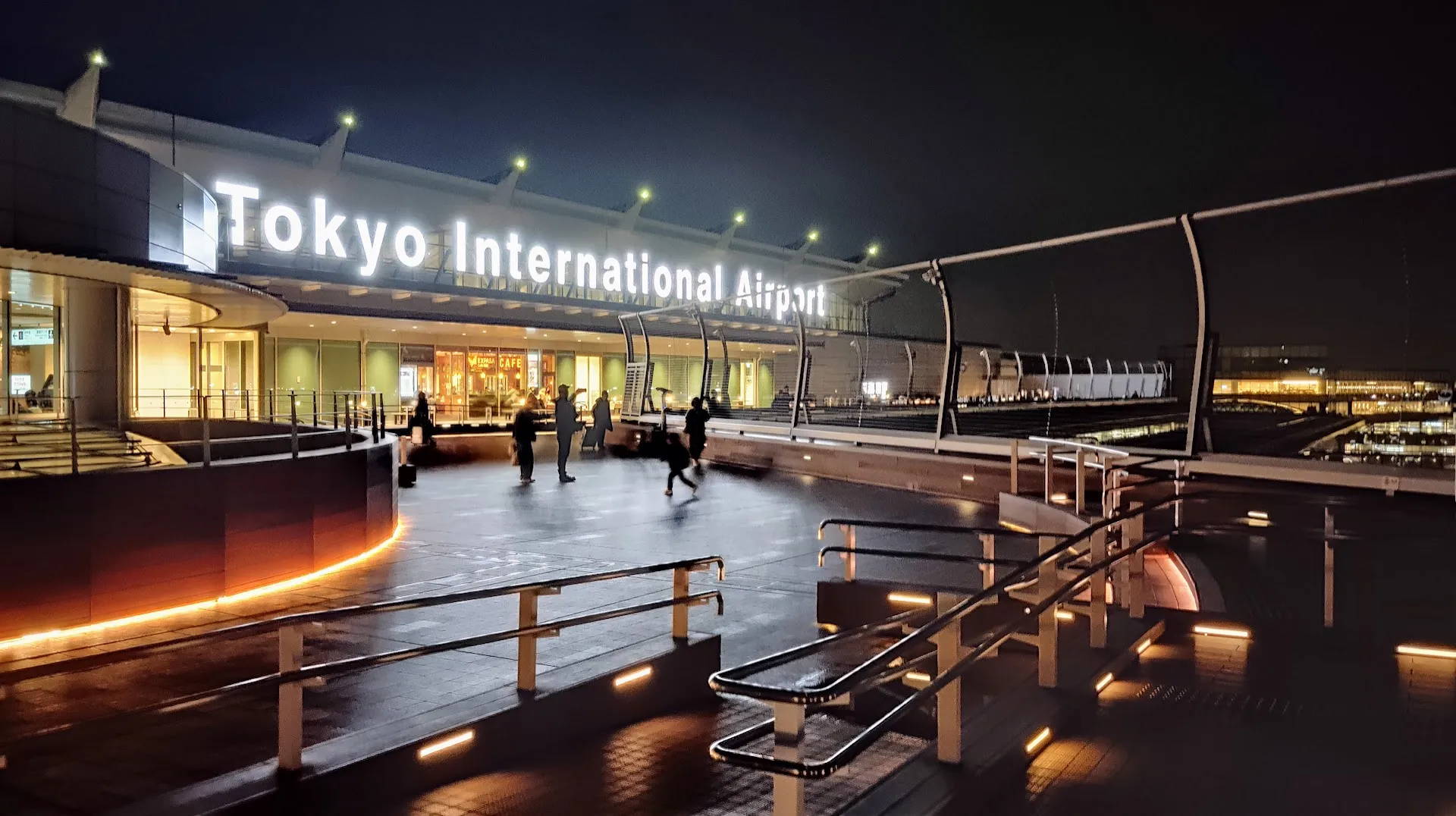This guide to Japan’s best airports walks you through the best-designed airports in Japan, from metro hubs to mountain ski retreats.
Top 5 Japanese Airports:
- Kansai International Airport (KIX) – Built on an artificial island with AI-powered security lanes (under 5 minutes), automated baggage systems, and earthquake/typhoon-resistant engineering
- Tokyo Haneda Airport (HND) – Just 14 minutes from central Tokyo, features Edo-period architecture, 8-minute average baggage wait times, and Mount Fuji observation deck views
- Chubu Centrair International Airport (NGO) – Offers the world’s first airport onsen (hot spring bath), centralized layout for shorter walking distances, and Boeing 787 aviation exhibit
- Narita International Airport (NRT) – Japan’s busiest airport with 100-meter glass walls for natural light, Japanese food hall, and fast rail connections to Tokyo in under 30 minutes
- New Chitose Airport (CTS) – Gateway to Hokkaido with 24-hour Studio Ghibli theatre, specialised chocolate shopping, and artistic “snow removal ballet”
Key Design Philosophy:
- Japanese airports blend cutting-edge technology with traditional aesthetics for maximum passenger comfort and efficiency
- Integration of natural elements like Zen gardens, hot springs, and expansive glass walls reduces travel fatigue
- Advanced AI systems, biometric gates, and automated processes significantly reduce wait times
- Strong connectivity to major cities with rapid rail links (14-35 minutes to city centers)
- Cultural experiences including art exhibitions, traditional architecture, and unique amenities set them apart from Western airports
- Top 5 Japanese Airports:
- Key Design Philosophy:
- Japan's best airports offer passenger comfort and efficiency
- 1. Kansai International Airport (KIX)
- 2. Tokyo Haneda Airport (HND)
- VIDEO: Walking Through Empty Haneda Airport (Edo Village)
- 3. Chubu Centrair International Airport (NGO)
- 4. Narita International Airport (NRT)
- 5. New Chitose Airport (CTS)
- Japan’s airport design philosophy
- Japan's Best Airports – FAQs
- What characterises Japanese airport design?
- How do Japanese airports leverage technology for efficiency?
- What unique architectural features can be found in Japanese airports?
- How do Japanese airports incorporate elements of nature and relaxation?
- What measures do Japanese airports take to ensure safety and resilience?
- What cultural experiences can travellers find at Japanese airports?
- How well-connected are Japanese airports to major cities and regions?
- Why are Japanese airports considered among the best in the world?
- Recommended For You
- Leave A Comment / Ask A Question
- About the Author
- I'm Rob, and I've been where you are
- Benefits You Can Choose
- What Clients Say
- How It Works
- Ways I Can Help You With Concierge
- Ready to Get Started?
- RESOURCES
Japan’s Best Airports Designed for Hassle Free Travel
by Rob Dyer
Japan’s best airports offer passenger comfort and efficiency
For decades now, Japan has been synonymous with cutting-edge technology. You can’t even talk about Japan without someone mentioning dazzling neon lights or super-smart toilets. This idiosyncratic approach to tech and design extends beyond the cities and into its airports, welcoming visitors with ingenious approaches to passenger comfort and efficiency.

We’re seeing advanced AI systems and architectural marvels revolutionising the aviation sector, and it’s fascinating to take a look and see how the Japanese blend this into their spartan yet aesthetic design choices.
In this guide, we’ll take a look at five of Japan’s most impressively designed airports. Each offers distinct features that set its own standards of extreme efficiency while retaining a sense of intentional design that leaves Western airports sputtering in the dust.
1. Kansai International Airport (KIX)
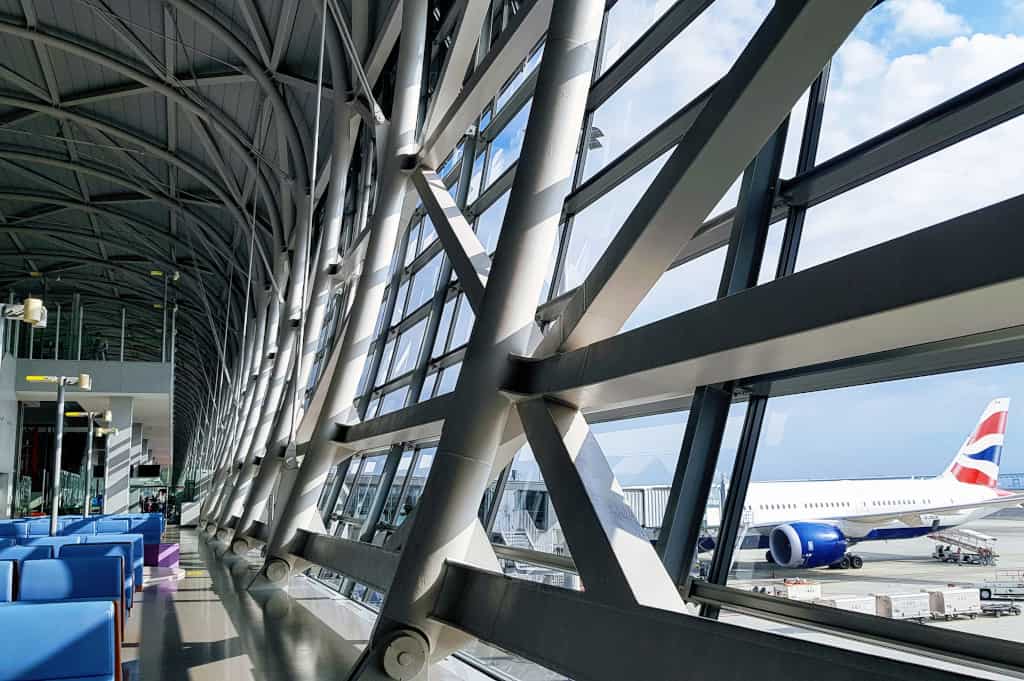
There aren’t many airports in the world built on their own artificial island. Opened in 1994, the airport is a key transport hub, as it’s the closest international airport to the cities of Kyoto, Osaka, and Kobe. Designed by Renzo Piano, the airport features two terminals, the first of which was actually the longest in the world at the time of construction. Aesthetically, the terminal is designed to resemble a glider’s wing and functionally to reduce congestion.
More recently, the airport has incorporated AI-powered security lanes, which has resulted in getting you through security in less than five minutes. Automated baggage drop systems also allow you to tag and bag your own luggage, leaving manned desks free for those with bulky or unusual baggage. Biometric eGates also streamline check-in and immigration procedures.

Although not directly contributing to passenger processing, the airport’s most fascinating component is its earthquake/typhoon avoidance design features. Special engineering solutions counteract sinking land and withstand typhoons and earthquakes. These technologies are so efficient, in fact, that the airport was undamaged by the Great Hanshin Earthquake in 1995 despite being just 12 miles from the epicenter.
SEE ALSO: How to Spend a Week in Kansai (And Not Visit Kyoto)
2. Tokyo Haneda Airport (HND)
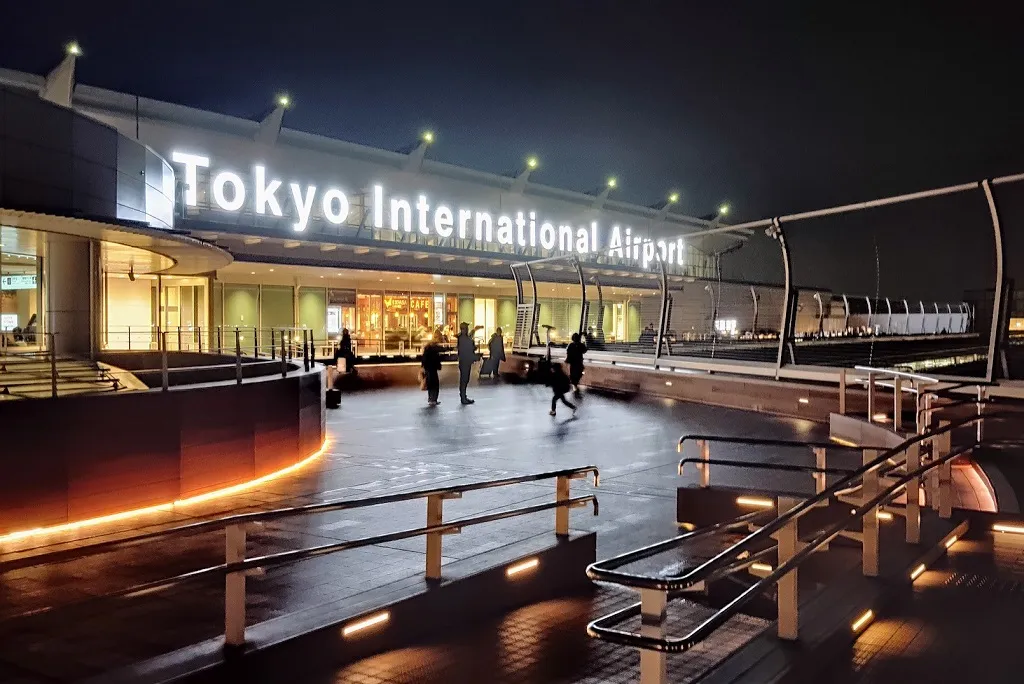
Just 14 minutes from central Tokyo, Haneda Airport (also known as Tokyo International Airport) is by far and away the best place to fly into for fast access to the city’s metropolitan centre. The International Terminal’s architecture pays homage to Tokyo’s Edo period, and you can even spot the nods to the city’s ancient machiya townhouses.
There’s a unique blend of old and new throughout the airport, with sleek aesthetics and the recreated Edo-period village that offers street food vendors and artisan shops reminiscent of old Tokyo. If you want a taste of the natural world, there’s even an observation deck where you can enjoy calming views of Mount Fuji. How many other airports can offer views of a world-famous landmark before you fly?
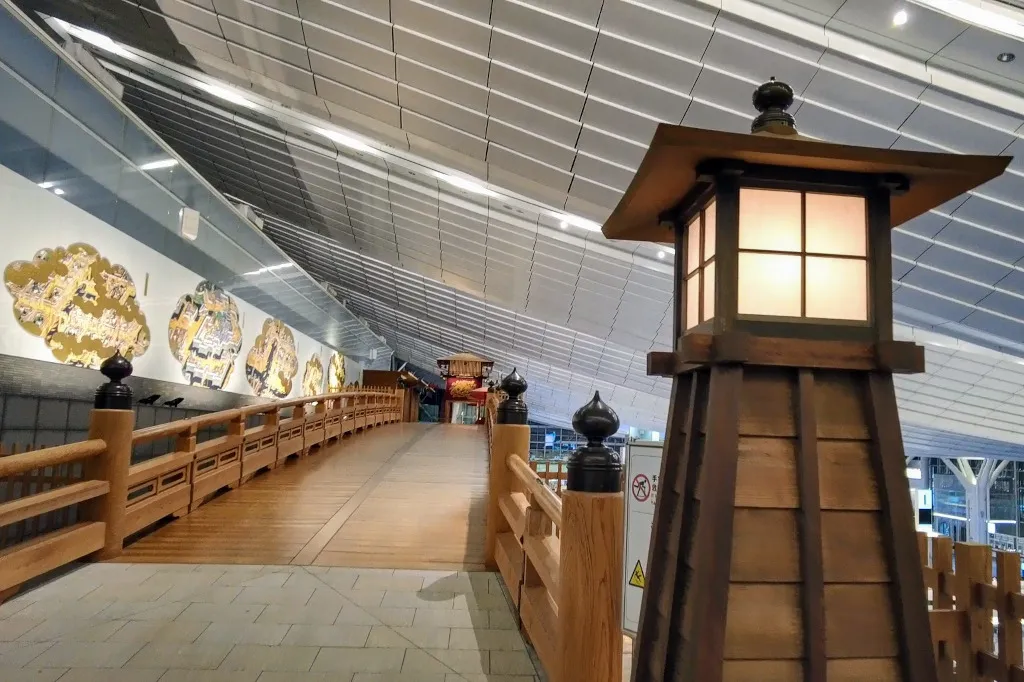
Haneda was voted the world’s best domestic airport in 2025, and it features one of the most impressive baggage delivery systems on the planet, boasting an average wait time of just eight minutes. Additionally, AI-enhanced wayfinding, including interactive digital signs and multilingual service robots, help you navigate the airport effortlessly.
Direct monorail and train lines mean you can get from the tarmac to the city in just 20 minutes, making it perfect for business trips. If you’re considering private jet hire, the airport is even more efficient, with a VIP jet terminal and transfers from the tarmac.
VIDEO: Walking Through Empty Haneda Airport (Edo Village)
3. Chubu Centrair International Airport (NGO)
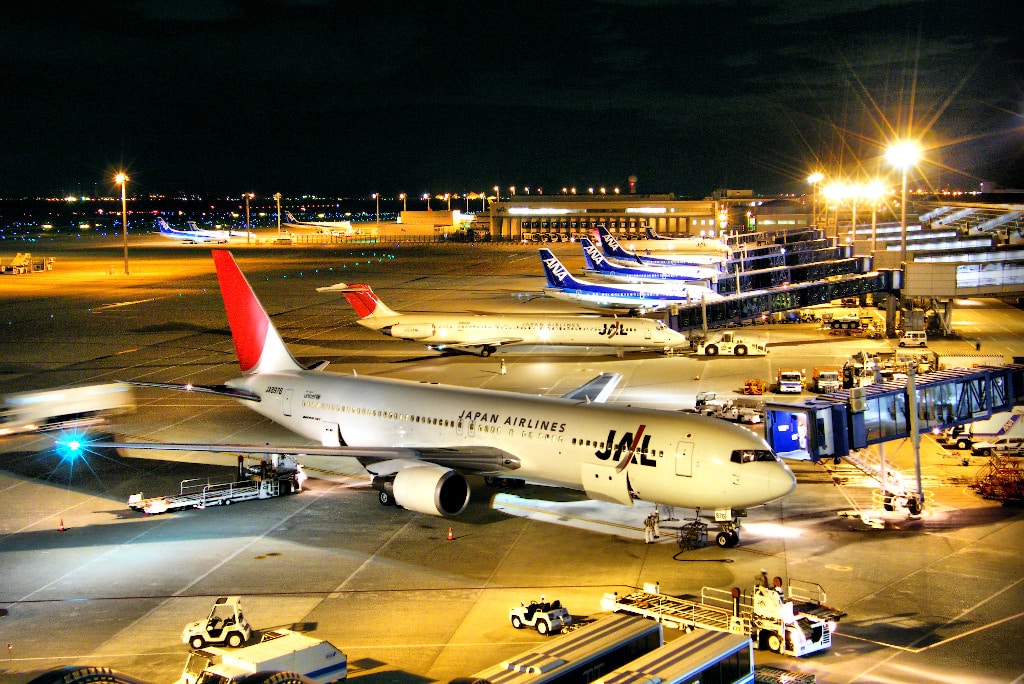
Chubu Centrair International Airport near the centrally-located city of Nagoya is the second airport on our list to be built on an artificial island, this time in Ise Bay. The airport also follows suit in blending elements from the natural world to create a more holistic airport design. The terminal’s roof is fashioned to resemble a traditional Japanese fan, symbolizing the spirit of hospitality that greets every visitor, especially those from overseas.
What makes Chubu Centrair truly unique on this list is its commitment to peace and relaxation, a testament to its dedication to easing any stress or fatigue you may feel after travel. The airport houses the world’s first airport onsen, allowing you to soak in a hot spring bath while watching planes take off and land. There’s also a sky deck with specially designed acoustics so that you can fully appreciate the power and sound of passing jet engines.
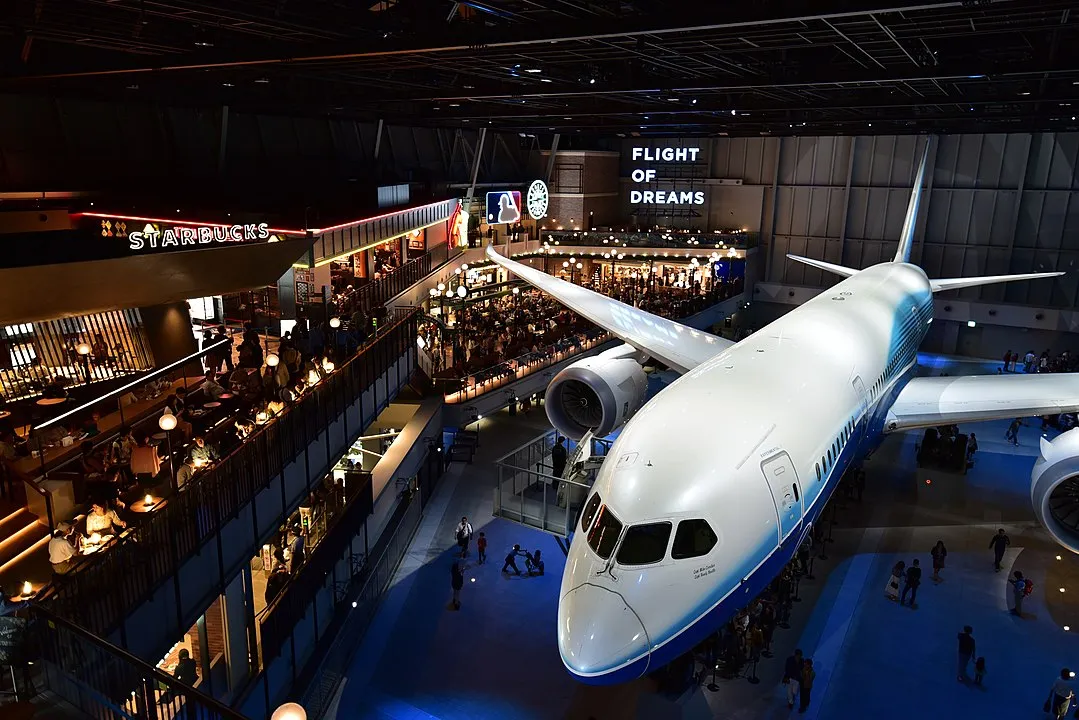
Chubu Centrair’s centralised layout also reduces walking distances, making transit comfortable and quick. If you arrive early or have an extended wait between transfers, check out Flight Park, a complex dedicated to aviation history that includes a Boeing 787 exhibit and interactive displays.
SEE ALSO: Nagoya City Guide
4. Narita International Airport (NRT)
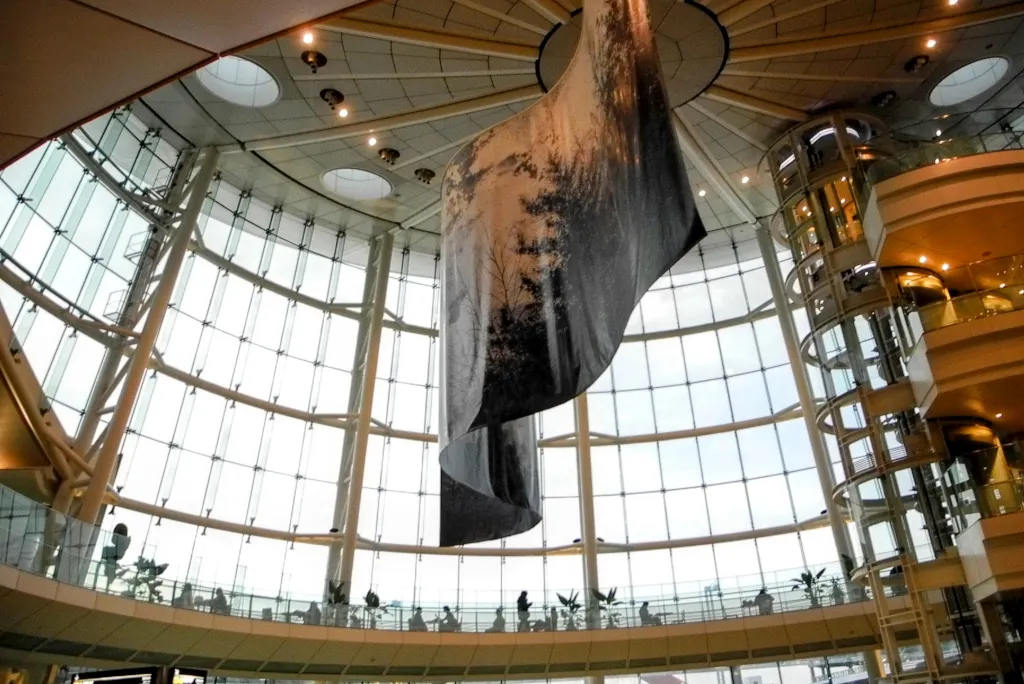
Narita International Airport is Japan’s busiest airport and most likely the one you’ll be flying into if you arrive from the United States and many other countries. Being the world’s introduction to Japanese style and culture, the airport expertly balances technological innovation with the serenity of Japanese aesthetics. Terminal 1 is bathed in natural light thanks to an expansive 100-meter glass wall, which is proven to help reduce passenger fatigue.
The airport is full of smart conveniences, including a Japanese food hall featuring ten different restaurants and fast rail connections like the Narita Express and Keisei Skyliner. Each can whisk you from the airport to the city in less than 30 minutes.
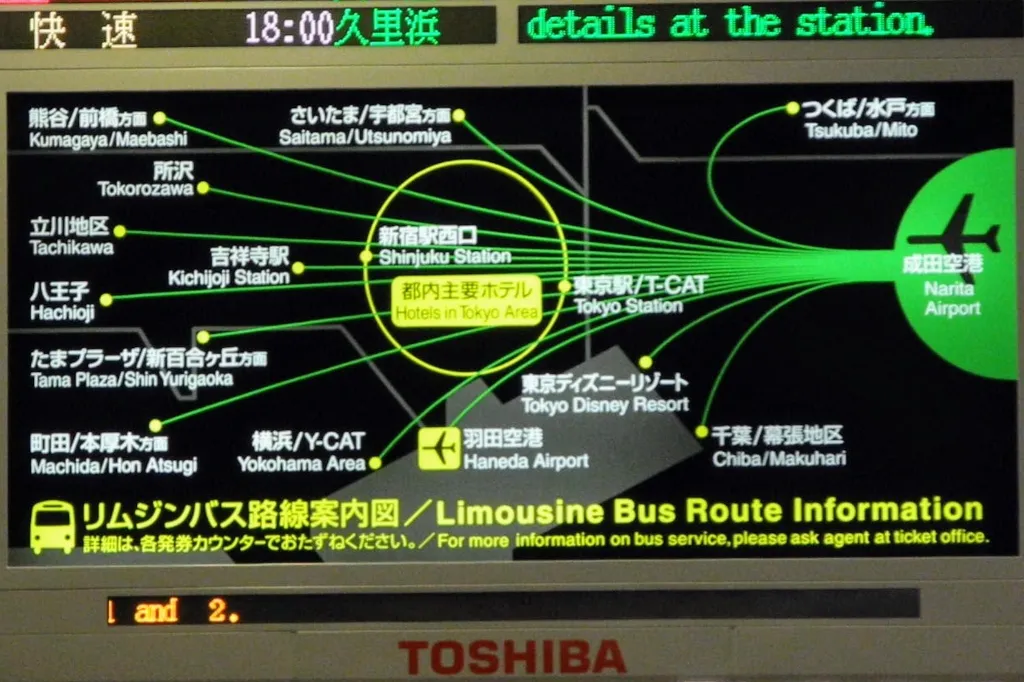
Narita also reminds visitors of the peace and tranquility that are at the heart of Japanese daily life, with Zen gardens and observation decks where visitors can relax while watching planes take off.
Rotating art exhibitions and seasonal events also keep you on your toes. Be sure to arrive between late March and early April, and you can participate in cherry blossom viewings in the nearby Naritasan Park.
5. New Chitose Airport (CTS)
While lesser-visited and not as well known as the other airports featured on the list, New Chitose Airport is a key gateway to Hokkaido, one of Japan’s premier skiing destinations. The airport is full of natural wood and expansive glass, which brings warmth and light into the terminal while offering beautiful views of the region’s snowy landscapes.
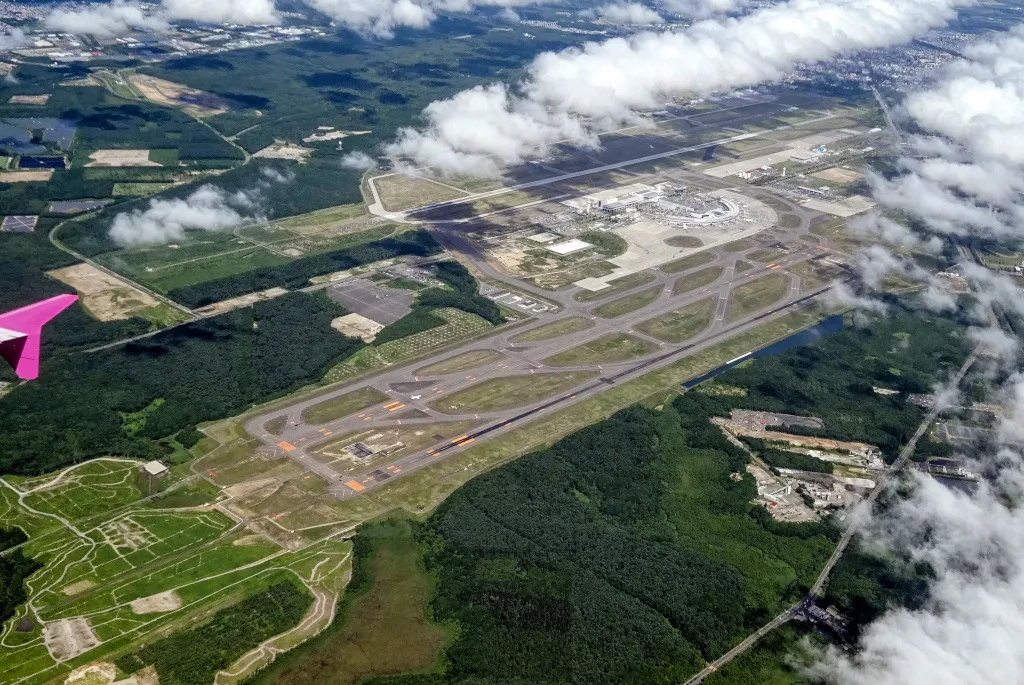
The airport has so many exclusive features and world-firsts that it’s easy to overlook them. We’re talking about a 24-hour Studio Ghibli theater, a shopping mall that specialises in Hokkaido’s famous chocolates, and even a “snow removal ballet,” where choreographed snowploughs keep runways clear in the most graceful, almost artistic display.
New Chitose also excels in connectivity. Rapid JR trains link the airport to Sapporo in just 35 minutes, and the Hokkaido Rail Pass offers seamless access to regional destinations, making it a convenient base for exploring the island.
SEE ALSO: Hokkaido Island Guide
Japan’s airport design philosophy
Japan does design like no other country in the world, so it’s no surprise that we see this DNA throughout the country’s airports. What makes it all the more satisfying is that these design features make the airports more beautiful, efficient, and relaxing, whether travelling domestically or internationally. Next time you visit Japan, consider taking internal air transfers so that you can make the most of your time in the country and these incredible transportation hubs.
Japan’s Best Airports – FAQs
What characterises Japanese airport design?
Japanese airport design is known for its blend of cutting-edge technology and aesthetic appeal, focusing on passenger comfort and efficiency. This approach integrates advanced AI systems and architectural marvels with traditional Japanese ascetic yet aesthetic design choices, creating spaces that are both highly functional and visually pleasing.
How do Japanese airports leverage technology for efficiency?
Japanese airports incorporate advanced technology to streamline the passenger experience. Examples include AI-powered security lanes at Kansai International Airport (KIX) that reduce wait times to under five minutes, automated baggage drop systems, and biometric eGates for quicker check-in and immigration. Tokyo Haneda Airport (HND) features AI-enhanced wayfinding and multilingual service robots, while boasting an impressive baggage delivery system with an average wait time of just eight minutes.
What unique architectural features can be found in Japanese airports?
Japanese airports often feature distinctive architectural designs. Kansai International Airport’s (KIX) terminal resembles a glider’s wing, while Chubu Centrair International Airport’s (NGO) roof is fashioned to look like a traditional Japanese fan, symbolising hospitality. Tokyo Haneda Airport’s (HND) International Terminal pays homage to Tokyo’s Edo period architecture, including a recreated Edo village, blending historical aesthetics with modern sleekness.
How do Japanese airports incorporate elements of nature and relaxation?
Many Japanese airports integrate natural elements and features for passenger well-being. Chubu Centrair International Airport (NGO) offers the world’s first airport onsen (hot spring bath) where travellers can relax while watching planes. Narita International Airport (NRT) includes Zen gardens and observation decks for tranquility, with its Terminal 1 bathed in natural light from a 100-meter glass wall. New Chitose Airport (CTS) uses natural wood and expansive glass to bring warmth and light, offering views of snowy landscapes.
What measures do Japanese airports take to ensure safety and resilience?
Kansai International Airport (KIX), built on an artificial island, features special engineering solutions to counteract sinking land and withstand typhoons and earthquakes. These technologies are so effective that the airport remained undamaged by the powerful Great Hanshin Earthquake in 1995, despite its proximity to the epicentre.
What cultural experiences can travellers find at Japanese airports?
Japanese airports offer a variety of cultural experiences. Tokyo Haneda Airport (HND) has an Edo Alley with street food vendors and artisan shops, reminiscent of old Tokyo, and an observation deck with views of Mount Fuji. Narita International Airport (NRT) hosts rotating art exhibitions, seasonal events, and is close to Naritasan Park for cherry blossom viewings. New Chitose Airport (CTS) uniquely features a 24-hour Studio Ghibli theatre and a shopping mall specialising in Hokkaido chocolates.
How well-connected are Japanese airports to major cities and regions?
Japanese airports are highly connected to their respective cities and regions. Tokyo Haneda Airport (HND) is just 14 minutes from central Tokyo, with direct monorail and train lines allowing access to the city in 20 minutes. Narita International Airport (NRT) offers fast rail connections like the Narita Express and Keisei Skyliner, reaching the city in under 30 minutes. New Chitose Airport (CTS) is linked to Sapporo by rapid JR trains in 35 minutes and provides the Hokkaido Rail Pass for regional exploration.
Why are Japanese airports considered among the best in the world?
Japanese airports are renowned for their exceptional design philosophy that prioritises efficiency, passenger comfort, and aesthetic appeal. They seamlessly integrate advanced technology with traditional Japanese design principles, resulting in a unique travel experience. Features like rapid processing times, intelligent wayfinding, unique architectural elements, opportunities for relaxation, cultural experiences, and robust infrastructure for safety and connectivity collectively contribute to their global acclaim.
Recommended For You
About the Author

A writer and publisher from England, Rob has been exploring Japan’s islands since 2000. He specialises in travelling off the beaten track, whether on remote atolls or in the hidden streets of major cities. He’s the founder of the multi-award-winning TheRealJapan.com.
Want a Japan trip that perfectly balances the iconic and the authentic? Concierge is my personalised travel planning service crafting journeys that align with your specific interests while incorporating both must-see highlights and hidden gems most tourists miss. Together, we’ll create an experience that goes beyond the surface, connecting you with the Japan you’ve always dreamed of discovering.
I’m Rob, and I’ve been where you are
I understand the struggle of building an itinerary that perfectly balances the iconic and authentic sides of Japan.
That’s why I founded The Real Japan, a place where independent travellers like you can thrive. My passion for sharing Japan beyond the cliches is what drives me.
I offer more that just inspiration; I provide personalised, unique and tailor-made travel plans to take your travels in Japan to the next level.
Want to see how I can transform your Japan travel?
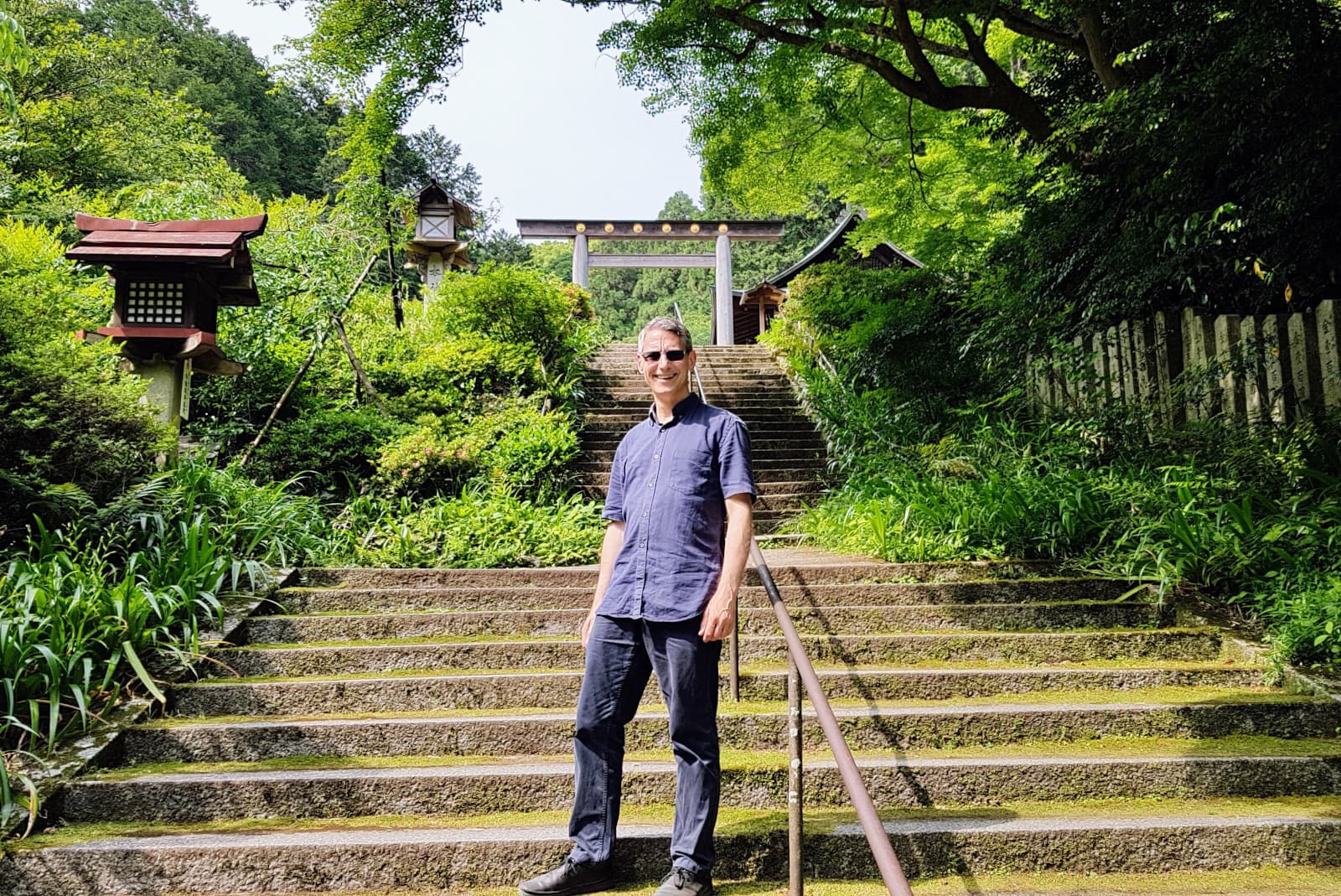
Benefits You Can Choose
Personal Itinerary
A tailor-made Japan Travel Plan matching your personal interests
and preferences
Unique Experiences
A unique Artisan Experiences Plan giving you private access to Japan’s finest craftspeople
Perfect Lodging
Curated accommodation/hotels recommendations based on your needs and criteria
What Clients Say
How It Works
Step 1: Book your service
Choose the plan duration that best fits your needs.
I have 4 options to choose from.
Step 2: I’ll handle all the details
I’ll ask you questions, we can jump on a Zoom call,
or you can email me your draft ideas.
Step 3: Your dream Japan
I set aside time to work exclusively on your travel plans.
I deliver your personal solution.
Ways I Can Help You With Concierge
Ready to Get Started?
If you found this guide helpful please share it with someone:

RESOURCES
Further Related Guides
Cheap Flights To Japan: Top 10 Tips and Flying FAQs
Exploring Japan With The ANA Experience Japan Fare
Flying to Japan? Here’s How To Fly Smarter
How to Spend a Week in Kansai (And Not Visit Kyoto)
Japan Architecture Tours An Insider’s Review 7 Wabunka Experiences
Journey From Kansai International Airport to Ashiya
More Destination Resources
My List of Recommended Japan Travel Resources
Recommended Japan Travel Resources

